Battling deepfakes, FT and Open AI make a deal, and PR firms build AI products.
Researchers have made a huge breakthrough in detecting AI-generated video content. Their system operates like a neural network that learns what is "normal" versus "unusual."

The team at The Rundown is in problem validation mode. All good product managers must focus on continuous discovery and ensure we are solving the right problem. So in that spirit, if you find this newsletter enjoyable to read or you think you learned at least one useful nugget each time, I have a request that will take only a few minutes of your time.
Help us shape The Rundown and fill out this short survey for us. Please, we would so appreciate it. It will help inform our back-end building decisions, our design choices and our business plan.
Bitcoin is still in the Rundown wallet. But large dumping from Grayscale, less buying from Blackrock and Fidelity, and less than expected action with the new Hong Kong Bitcoin ETFs are causing a slide. I plan to buy more.
On-the-Go News Whip
The Financial Times and OpenAI strike a content licensing deal. A.I. start-ups face a rough financial reality check: It’s going to be too hard to compete with Google, Microsoft and Meta. AI is making Meta’s apps unusable because there’s just a flood of AI generated content on social media, especially spam-filled Instagram. Synthesia just released a new diffusion model called Express-1, which allows AI avatars to understand a script and adjust performance on the spot. The Rundown is using Hey Gen for my avatar, but I will be checking this one out.
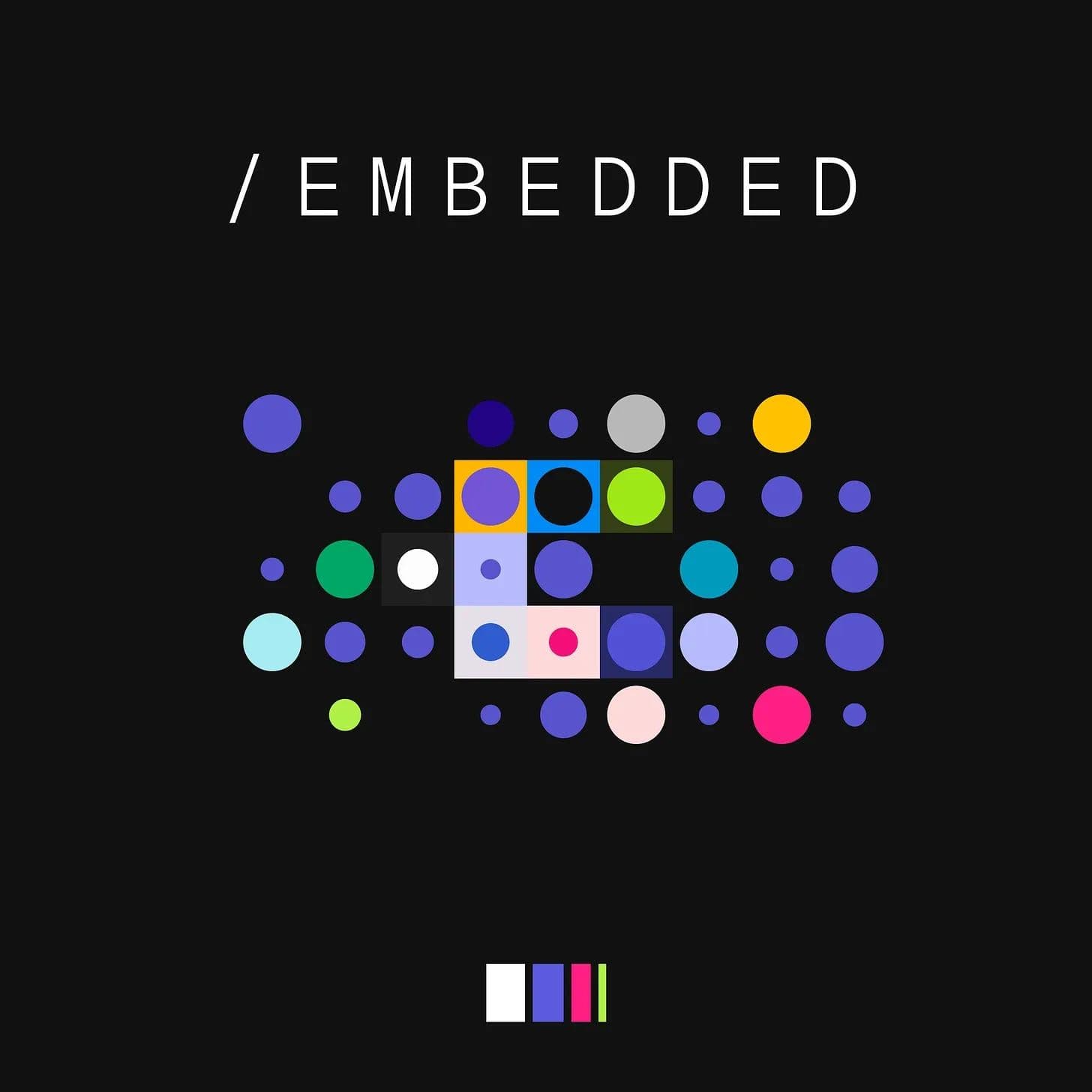
BBC Presenter Victim of AI Fraud
In a case of AI fraud, BBC presenter Liz Bonnin's likeness was used in an advertising campaign without her consent after a company fell victim to a voice AI scam. Here’s how it worked:.
An AI-generated voice mimicking Bonnin convinced the CEO of Incognito, the company behind the ad campaign, through several voice messages that she had granted permission. The scammers even provided contact details, impersonating Bonnin's team and a wildlife charity she's associated with, and used an AI voice over the phone. Incognito wired £20,000 to an account linked to a digital bank after they received, what looked like, a valid contract signed electronically by "Bonnin." One of the voice notes shared with The Guardian reveals weird, unnatural phrasing like "I must thank you for providing clarity on the direction you envision for our collaboration"—a major telltale sign of an AI-generated voice.
Battling Deepfakes
Researchers from Drexel University's Multimedia and Information Security Lab have made a huge breakthrough in detecting AI-generated video content. They had success with a machine learning algorithm that can pick out and recognize digital "fingerprints" of various video generators like Stable Video Diffusion, Video-Crafter, and Cog-Video. So how does it work?
Instead of searching for predetermined telltale signs or markers of manipulation, their system operates like a neural network that learns what is "normal" versus "unusual" at the sub-pixel level of videos, which is really similar to how the human brain works. After very minimal exposure to an unseen AI video generator, the machine learning model can achieve up to 98% accuracy in detecting its synthetic videos.
The traditional image detectors have really struggled with AI videos, and we’ve seen a major drop in effectiveness as deepfakes become more sophisticated and widespread. In a major election year for about half the world, this has the potential to counter misinformation and disinformation across a whole list of platforms.
Bankers Onboard
A new survey from Central Banking has revealed that AI tools are starting to make inroads into the communications world. The survey showed that around one in five central bank communications departments use AI technology to help with their work. While the adoption levels are still quite low, the data does suggest the use of AI is an emerging trend in the industry.
PR Firms build their own products
However, there are some communications and PR firms that are looking to break ahead and become industry game changers by rolling out their own proprietary AI tools and products. Something we’re working on at The Rundown with Wanja.
Edelman has woven its Trust Barometer data into an AI platform called Archie, which tracks trust levels and provides real-time recommendations to build trust. 50 of Edelman's client teams are actually actively using this tool. Firms like BCW and Teneo are also using AI to monitor global trends and perform predictive analytics. Communications consultancy MikeWorldWide recently debuted AI-powered products Perspectives and ProfileLift to leverage data for predicting, crafting, and analysing content performance.
Hold Up
However, there are major concerns growing about the transparency and ethical use of generative AI. According to a Seven Letters insight survey, only half of communications professionals have internal AI policies, while 9 in 10 want clear records of how firms are deploying the technology for client work. As generative AI technology improves and the communications industry gets reshaped, we’re going to see more and more agencies investing heavily to integrate these capabilities into their service offerings for clients.
Note: This is something we are working on at The Rundown that will be useful to communications and PR teams.
Big Tech is spending billions on AI with no end in sight
In quarterly earnings calls this week, Google, Microsoft and Meta gave us these mind boggling numbers:
- Meta raised its predictions for how much it will spend this year by up to $10 billion.
- Google plans to spend around $12 billion or more each quarter this year, much of which will be for new data centers.
- Microsoft spent $14 billion in the most recent quarter and expects that to keep increasing "materially.”

Tune into the Digital Data Design Institute at Harvard Leading with AI conference on May 7 to learn how your organization can capitalize on digital transformation. Learn more here: https://bit.ly/HBS_conference
What’s in Zain’s Zany bag?
I will be receiving The Rabbit soon, and I am excited about that. I watched the “unboxing” online. I received a “it’s on the way email.” A large action model (LAM) review will be coming soon.
In spirit, it’s an idea similar to Alexa or Google Assistant. Rabbit OS can control your music, order you a car, buy your groceries, send your messages, and more, all through a single interface. No balancing apps and logins — just ask for what you want and let the device deliver. The R1’s on-screen interface will be a series of category-based cards, for music or transportation or video chats,
I’m studying Helium Network and thinking of investing a few shillings here. This is known as a DePIN (decentralized physical infrastructure network) in crypto. It’s a big current narrative. Basically, you get the community to participate in building your infrastructure because, otherwise, you can not fight the bigger players.
The Helium Network represents a paradigm shift for decentralized wireless infrastructure.
I’m intrigued because I am exploring use cases for Africa and connectivity in particular. I’ll report back on what I learn.
We are also getting some great buzz from our online conference, in partnership with TechCabal, where Ambassador Bitange Ndemo was our main speaker on building AI in Africa. Here are a couple of snaps of that.
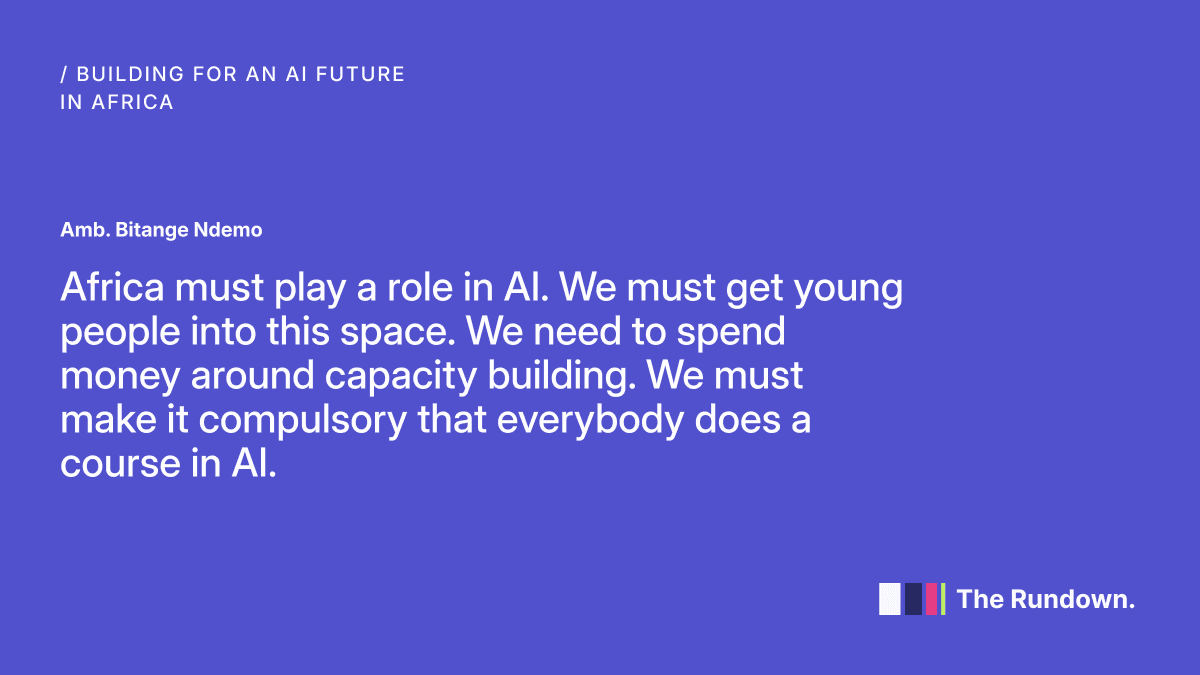
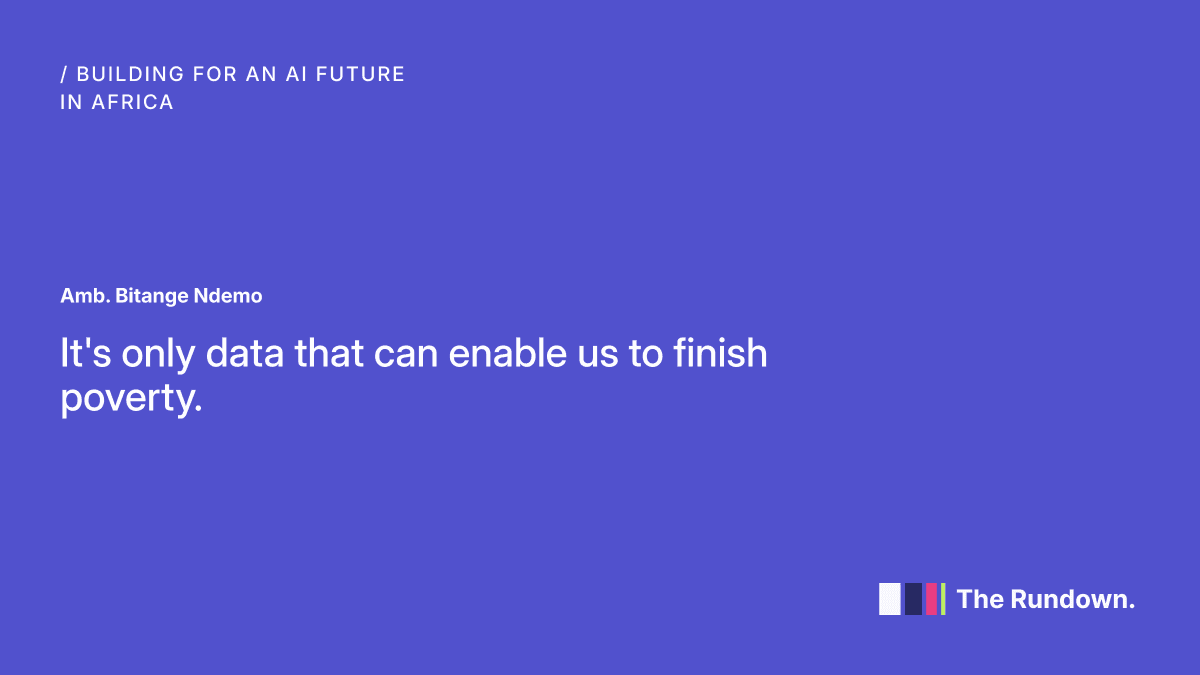
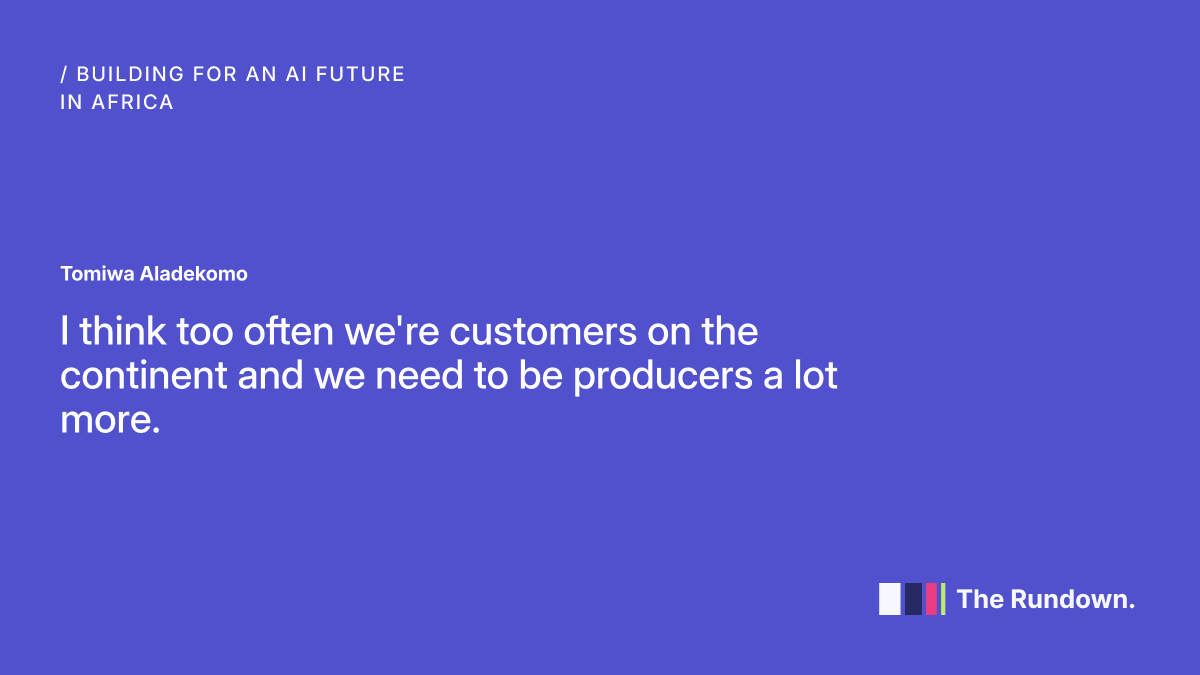
Marketers, please stay authentic and creative, do not rely too much on me
Written by Claude III, Opus
As AI transforms marketing, businesses must understand the potential pitfalls associated with its implementation. While AI offers efficiency and insights, marketers must be aware of the challenges that come with over-reliance on this technology.
One significant risk is the homogenization of content. To mitigate this, marketers should use AI as a starting point for inspiration and fine-tuning, rather than relying on it for final copy. Human oversight is crucial to ensuring accuracy, preventing bias, and maintaining content integrity and brand alignment.
Intellectual property and copyright violations are also potential risks. To avoid these issues, brands should use generative AI for research and inspiration, but not blindly use AI-generated content without proper vetting.
Bias and inaccuracies can creep into AI-generated content if the training data is not diverse and unbiased. Human oversight is imperative to detect and correct these issues.
We appreciate you
Help us shape The Rundown and fill out this short survey for us. We would so appreciate it. It will help inform our back-end building decisions, our design choices and our business plan.
Thanks so much for your support.
Always.
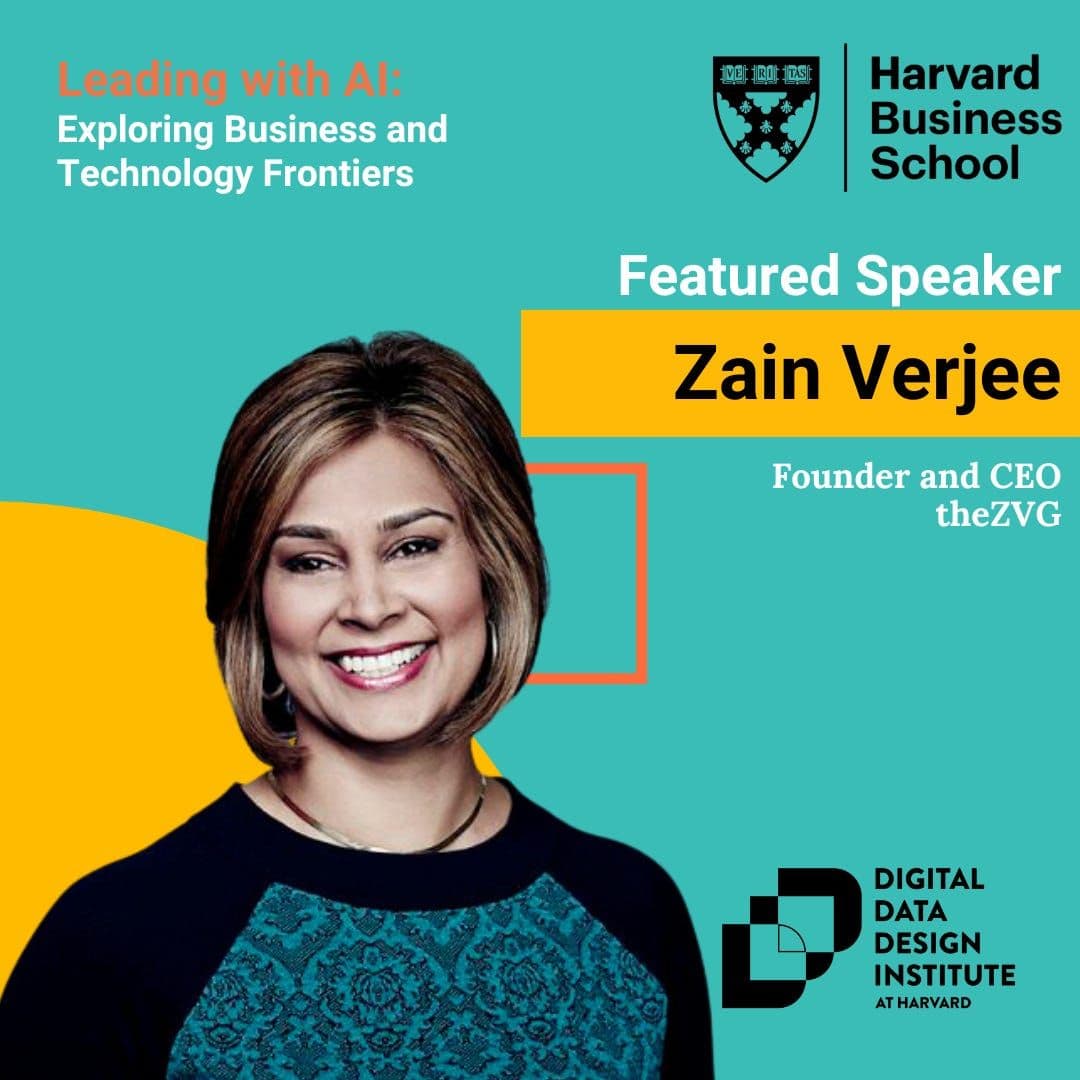
Interested to learn more?
Sign up today to get notified on the future of communication and AI
More from the blog
No excuses about infrastructure, please. A conversation with Ambassador Bitange Ndemo x TechCabal
Africa should not be thinking about whether or not to adopt AI. Why? We have the most young people. We have the biggest opportunity to actually take over the world.
Building for an AI Future in Africa
Over chicken and chips in Nairobi at my favorite outdoor BBQ joint, I met with Tomiwa Aladekomo the CEO of Big Cabal Media. Here's what that quick and tasty meal led to:.
Shady stuff with Slim Shady, AI election tracker and the techno-colonization debate
Event Alert: Building for an AI future in Africa. The Rundown Studio is excited about its first online event in partnership with Tech Cabal. Register now.
A data security toolkit for you on digital mindfulness, who is Mr100, and Mona Lisa raps
"Do not walk down the street with your bag open and your wallet out.” This series is focused on your personal digital hygiene and practices.